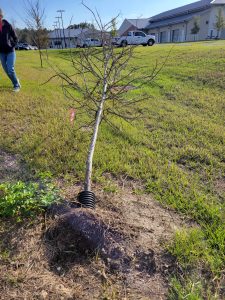Florida is known for what can be pretty intense summer storms, and the occasional tropical storm or hurricane. When caring for our urban trees, care should be taken to ensure they are in the best health possible before storm season starts. See my blog on prepping trees for hurricanes for more about that:https://blogs.ifas.ufl.edu/lakeco/2022/11/14/prepping-trees-for-hurricanes/
After the storm passes, weather it is our standard summer storm, or a more powerful tropical system, trees need inspected. What should you look for?
Broken Branches: Remove broken branches and trim to a correct location. See my blog on the 3-cut pruning method for more information: https://blogs.ifas.ufl.edu/lakeco/2021/12/02/3-cut-tree-pruning/ Pruning to the correct location allows the tree to heal faster while also reduces the changes of failure in a storm.
Branch/trunk cracks: Cracks must be manages. Limbs can be pruned to a appropriate location. Major trunk cracks often require removal.
Trunk Lean: If you notice a lean after a storm, call a professional for an inspection. Depending on the cause of the lean, it may need staking/bracing, or removal. The larger the tree, the more likely removal is required.
Loose Roots/Rootball: Especially with younger and newly planted trees, the root ball may come loose. You pay be able to stake the tree and tighten the soil yourself. Older trees may suffer from water inundation in the soil causing the tree roots to loose their grip on the soil. Some trees can be staked until roots re-establish, others will require removal.




Credit: Jamie Daugherty
While the initial inspection after the storm is important, you tree could still drop limbs and show new signs of stress/damage a week or more after the storm, depending on the species. For example, pines may seem fine at first, when quickly decline over a few weeks to several months. Read more about details of caring for your tree after a storm at the link below.
Additional Resource: https://sfyl.ifas.ufl.edu/media/sfylifasufledu/miami-dade/documents/disaster-preparation/hurricane-and-disaster/Assessing-Damage-and-Restoring-Trees-After-a-Hurricane-Gilman.pdf
 0
0
